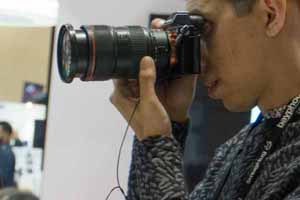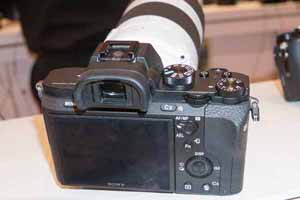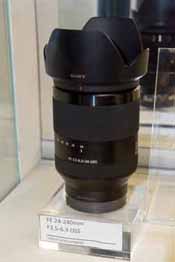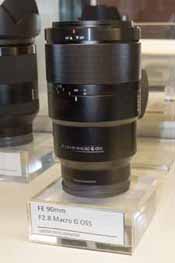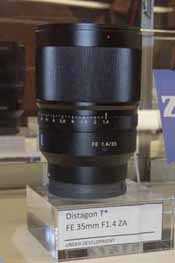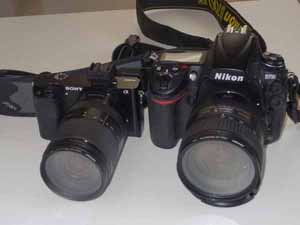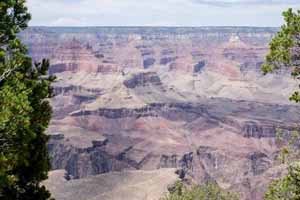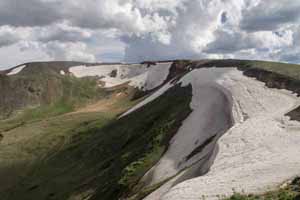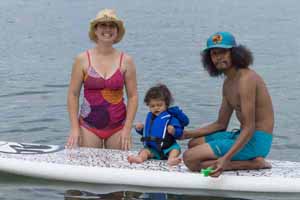Online Magazine
Recent Posts
- Safeguard your Cellphone Photos
- Black & White to Color – Instantly
- Wearing Many Hats
- Video Roundup
- Rescuing Your Blurry Pictures
- Showing Their Age
- What is Your Angle?
- Panorama Photos
- Humorous Photos
- Close Ups
- Fisheye Pictures
- Photo Antiquities
- Printing Big
- Appreciating Scale
- Celebrity Sightings
Tags
More Places to Go
- Free "How-To" Books “How To” books for popular cameras 0
- Vist Us on Facebook keep in touch with us on Facebook 2
Archives
- July 2023 (1)
- March 2023 (2)
- February 2023 (1)
- December 2022 (1)
- October 2022 (1)
- September 2022 (8)
- August 2022 (9)
- July 2022 (1)
- June 2022 (1)
- June 2021 (1)
- May 2021 (1)
- March 2021 (5)
- February 2021 (4)
- January 2021 (2)
- April 2019 (1)
- March 2019 (1)
- February 2019 (1)
- October 2018 (2)
- April 2018 (1)
- March 2018 (4)
- February 2018 (1)
- November 2017 (1)
- August 2017 (1)
- June 2017 (1)
- April 2017 (1)
- March 2017 (5)
- February 2017 (2)
- January 2017 (1)
- October 2016 (1)
- September 2016 (1)
- August 2016 (1)
- July 2016 (1)
- May 2016 (1)
- April 2016 (1)
- March 2016 (2)
- February 2016 (1)
- January 2016 (2)
- December 2015 (1)
- November 2015 (1)
- October 2015 (3)
- April 2015 (1)
- March 2015 (5)
- February 2015 (1)
- January 2015 (4)
- December 2014 (2)
- November 2014 (5)
- October 2014 (2)
- September 2014 (1)
- August 2014 (2)
- July 2014 (1)
- May 2014 (1)
- April 2014 (5)
- March 2014 (5)
- December 2013 (2)
- November 2013 (18)
- October 2013 (1)
- September 2013 (1)
- August 2013 (1)
- July 2013 (1)
- June 2013 (3)
- May 2013 (1)
- April 2013 (2)
- March 2013 (1)
- February 2013 (1)
- January 2013 (1)
- December 2012 (1)
- November 2012 (2)
- October 2012 (2)
- September 2012 (5)
- August 2012 (2)
- July 2012 (1)
- June 2012 (1)
- May 2012 (1)
- April 2012 (4)
- March 2012 (1)
- February 2012 (1)
- January 2012 (3)
- December 2011 (1)
- November 2011 (3)
- October 2011 (1)
- September 2011 (2)
- August 2011 (2)
- June 2011 (3)
- May 2011 (4)
- April 2011 (8)
- March 2011 (8)
- February 2011 (10)
- January 2011 (6)
- December 2010 (11)
- November 2010 (14)
- October 2010 (6)
- September 2010 (12)
- August 2010 (2)
- July 2010 (4)
- June 2010 (3)
- May 2010 (1)
- April 2010 (1)
- March 2010 (2)
- February 2010 (1)
- January 2010 (1)
- December 2009 (1)
- November 2009 (2)
- October 2009 (2)
- September 2009 (1)
- August 2009 (3)
- July 2009 (2)
- June 2009 (1)
- May 2009 (2)
- April 2009 (1)
- March 2009 (2)
- February 2009 (1)
- January 2009 (3)
Seen at WPPI – Canon M5
10th March 2017
Canon’s Latest Mirrorless
|
|
|
| This past February at the Wedding and Portrait Photography International Conference & Expo, I stopped at the Canon booth to take a look at the company’s new M5 mirrorless interchangeable lens camera. | |
|
|
|
| Canon is best known for their full featured DSLR cameras. Although I own several high end DSLRs from both Canon and Nikon, I’ve been a devoted user of mirrorless cameras for at least five years owing to the compact size and electronic viewfinder that I highly value.
Sony has been a leader in the mirrorless realm with Fujifilm, Panasonic and Olympus close behind. Canon has been playing catch up with its M series for a couple of years. I now consider the M5 a strong contender. The new M5 now uses a 24MP sensor with Dual Pixel AF for faster and more precise autofocus. This is Canon’s first M series with built-in viewfinder. The M5 combines in-camera digital and optical lens stabilization. The tilting LCD has doubles as a touchscreen. And the camera has a built-in flash. |
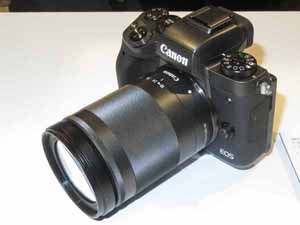 This is the Canon M5 with the 18-150mm EF-M lens. |
|
|
|
 The tilting LCD also functions as a touchscreen. Touch the screen to activate focus manually. |
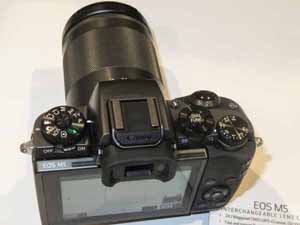 As you can see the M5 has a convenient, dedicated exposure compensation dial. |
|
|
|
| The M5 also captures full HD 60p movies in MP4 format. The touchscreen can be used during video operations to affect focus.
The camera includes Wi-fi and NFC capabilities as well as bluetooth to send images to a smartphone. The suggested price of Canon M5 with 15-45mm EF-M lens is $1099. The suggested price of the Canon M5 with the 18-150mm EF-M lens is $1479. For more information about the M5, please visit Canon. |
|
|
|
|
Written by: Arnie Lee
Sony A7 II
22nd March 2015
New Full Frame Mirrorless
I’ve been using several of Sony’s mirrorless cameras for three years or so. The three models that I regularly use are the NEX5, NEX7 and A6000 each with an APS-C size sensor. All three are compact and lightweight. Both the NEX7 and A6000 have viewfinders – a necessary feature that I expect in an advanced camera.
The A6000 has been my “go-to” camera for the past year. The quality of the images match up to those from the Canon 7D and Nikon D90 but with the added convenience of a noticeably smaller piece of hardware.
With this previous experience with mirrorless equipment, I went to the Sony booth at the Wedding & Portrait Photographers International Expo to have a look at the new full-frame Alpha 7 II.
The A7II has a full size 24MP sensor in a body that weighs a mere 21 ounces. This compares to the Canon 5D MkIII at 33 ounces or the Nikon D800 at 35 ounces. The physical size of these three cameras are (W x H x D) A7II is 5″ x 3-7/8″ x 2-3/8″ Canon 5D MkIII 6″ x 4.6″ x 3″ Nikon D800 5.7″ x 4.8″ x 3.2″
The A7II shares many of the same features of the A6000 including sweep panorama shooting mode, built in HDR, on board wifi connectivity, electronic viewfinder displays real time adjustments and tilting LCD screen. Unfortunately the A7II does not have a built-in flash as does the A6000. However the A7II records 4K video, sports fast “hybrid” autofocus and 5-axis image stabilization and 5fps still capture.
As far as lenses are concerned, Sony’s mirrorless versions (designated as FE-mount) do not share the same size and weight savings as the A7II body. But given that the body is about a pound less and considerably smaller in size, I felt that the weight savings would be a definite advantage for the type of shooting that I do in the field.
Sony also announced the release of these three lenses for full frame mirrorless:
The Sony rep also mentioned an upcoming 28mm f/2 lens that will also accept a 16mm fisheye converter and a 21mm ultra wide angle converter.
The suggested price is $2000 and is available about May 1st. For more information about the A7II, please visit Sony.
The bottom line – if you’re looking for a camera that provides the high resolution that only the mid-size format were able to deliver, the Canon 5DS (and 5DSR) has now lowered the entry price by thousands of dollars.
Written by Arnie Lee
The Sony A6000 Mirrorless
14th August 2014
My 6300-Mile Field Test
On our recent vacation, my camera of choice was Sony’s newest mirrorless camera. While I also brought a much larger Nikon D700 conventional DSLR, I relied mostly on the the Sony A6000. As a comparison, I captured about 150 images with the Nikon D700 and more than a thousand images with the Sony A6000.
My setup was the A6000 coupled with Sony’s 18-200mm lens. This combination is lightweight and compact, produces quality images and just happens to fit beneath the driver’s seat for fast, convenient access.
Hopefully, the following photographic sampler illustrates the A6000’s versatility. I’ll add a few techie details afterwards.
I suppose it doesn’t matter than I traveled 6300 miles with the camera other than I used it under a variety of conditions.
My “film” was a 32GB SD card, but I never filled it with the 200 pictures a day (the camera was set to record simultaneous RAW and JPG images). All in all, I’m very happy with the images that the camera produced. The one small gotcha is that the A6000 has a short battery life – probably due to the electronic viewfinder. Thankfully, I had an extra battery that I carried along.
Since this is my third Sony mirrorless camera, you can safely assume that I’d recommend this camera to others. In fact my daughter must have agreed with my assessment and purchased one.
For those interested, here’s a few of the technical specs for the A6000:
Sony A6000 os a mirrorless with a 24MP sensor. One of the reasons for choosing this camera is its fast and accurate hybrid focusing system that allows up to 11 frames per second capture. Other proven features are its “sweep panorama”, automated HDR capture, easy exposure bracketing, and Sony’s proven video recording.
List price for the A6000 body without lens is $650. The 18-200mm lens cost $850, more than the body but this single lens allowed me to enjoy the scenery without clutter of additional lenses.
Written by: Arnie Lee
